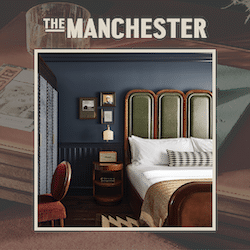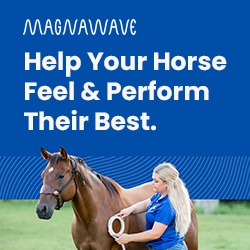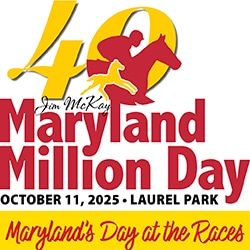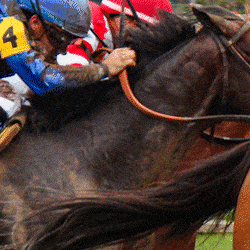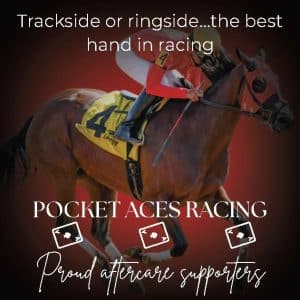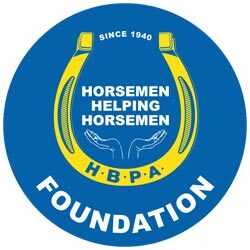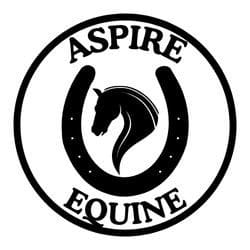Meet four ex-racehorses helping heal human bodies and minds.
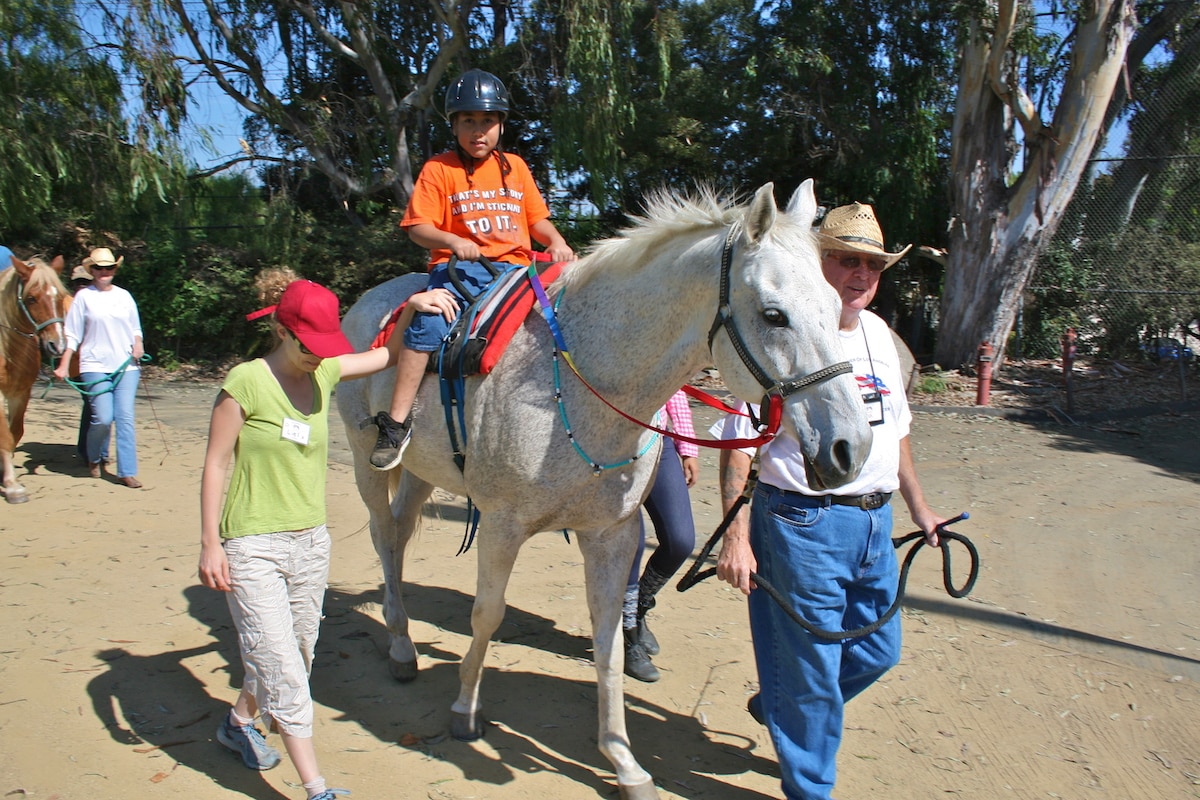
Twenty-six-year-old Tristan is still going strong at Dreamcatcher Therapeutic Riding Center. Courtesy Dream Catcher Therapeutic Riding Center
Visit any therapeutic riding center in the United States, and you’ll find some of the kindest, steadiest and most patient horses out there. Among these horses, certain breeds prevail due to their quiet temperaments, strength and stature.
Herds full of Fjords, Haflingers and Quarter Horses are common sights in therapy programs. In general, Fjords and Haflingers have strong backs — good for carrying imbalanced riders — and are typically on the shorter side, which makes side-walking and supporting riders easier for volunteers and instructors. Compact Quarter Horses — those bred for reining or cow work — are also known for their quiet minds and easy gaits, which are positive qualities in horses ridden by people with special physical and cognitive needs. Thoroughbreds off the track? Maybe not so much.
For one, Thoroughbreds are typically on the taller side, often topping 16 hands or more, making side-walking difficult, if not impossible, for all but the tallest people. They’re also more spirited than their cold-blooded cousins, with more energy and reactivity. However, sometimes that reactivity works, and certain talented off-track Thoroughbreds employed as therapy horses throughout the country have proven themselves priceless to their programs, particularly those that offer mental health and equine-facilitated learning services. Here, meet four treasured therapy Thoroughbreds.
Tap Til Dawn, aka “Tristan”
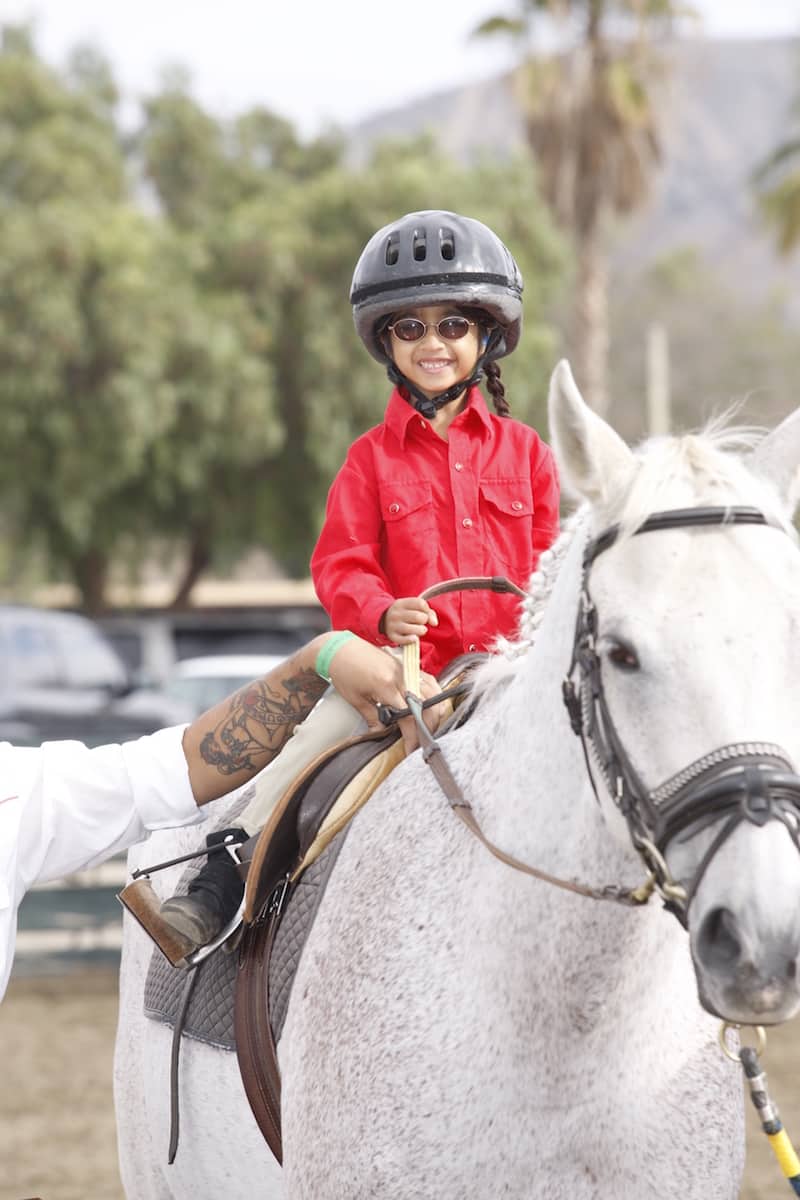
Tristan’s riders have dubbed him “Tristan the Wonder Horse.” Courtesy Dream Catcher Therapeutic Riding Center
(Tap The Mint — Ziggy)
1991 gelding
Breeder: Clarence Robb, Illinois
Race record: 2-0-0-0
Track earnings: $125
Dreamcatcher Therapeutic Riding Center
Los Angeles, California
In 2015 Tristan received The Jockey Club’s Thoroughbred Incentive Program “Horse of the Year” award for his work as a therapeutic riding horse, a job he’s held at Dream Catcher Therapeutic Riding Center since 2009. In fact, he was the program’s very first — and for the first year, only — herd member.
Now 26 years old, the big gray gelding is still “going strong,” says Joan Blank, founder of Dream Catcher, a Professional Association of Therapeutic Horsemanship (PATH) member center that offers a variety of programs, including traditional riding classes for those with cognitive and physical challenges, as well hippotherapy (physical, speech or occupational therapy on horseback), equine-assisted learning (think groundwork designed to build confidence in the student and help with life skills) and equine-assisted activities therapy (done with licensed mental health professionals).
Blank says people were skeptical at first of using a 16.1-hand Thoroughbred to start a therapeutic riding center. “Everyone said, ‘A Thoroughbred for a therapy horse? No, no, no!’ ” she recalls. But Tristan, then 19, had years of experience as a hunter-jumper and dressage horse, was steady under saddle, easy to ride and had no spook.
“Nothing bothered him,” Blank says. “He was so patient and didn’t have a mean bone in his body.”
His gentle nature, inquisitive mind and size made him versatile, able to carry everyone from small children to independent adults. “He absolutely knows who’s on his back and acts accordingly,” Blank says. “He adapts and learns to accept different cues from different riders. He’s just a cool guy.”
He’s so cool, his riders refer to him as “Tristan the Wonder Horse.”
For those who might seem skeptical of using Thoroughbreds in therapy programs, Blank offers the following advice: “Across all breeds, it’s all about the individual horse and his personality.”
Irresponsible King, aka “Stanley”
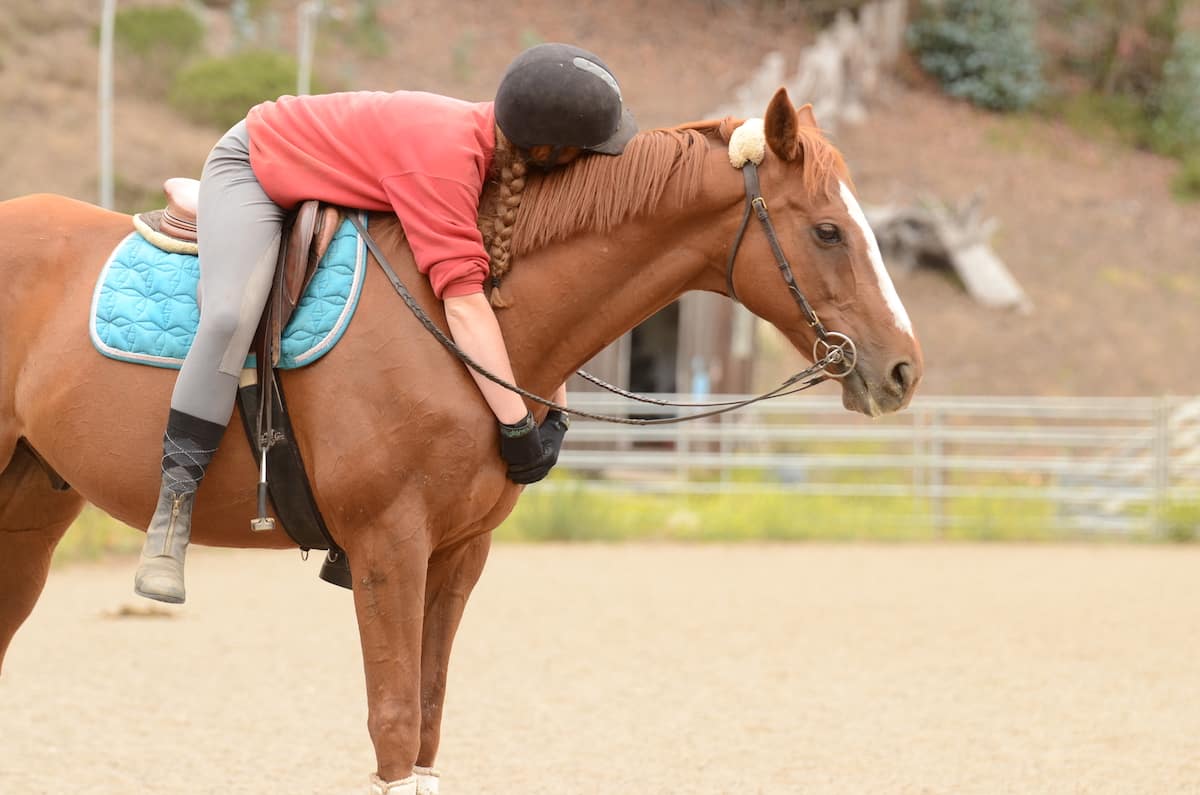
Stanley is the Square Peg Foundation’s “ice-breaker” horse. Courtesy Robin Peters
(Kingmambo — Our Fair Lady)
2002 gelding
Breeder: Madeleine A. Paulson and Ernest Moody, Kentucky
Race record: 5-0-2-1
Track earnings: $20,400
The Square Peg Foundation
Half Moon Bay, California
Adults and children with autism often struggle with communication and social interactions. Something as simple as meeting someone for the first time can become a barrier to connecting. Enter Stanley, a “goofball of a gelding” at The Square Peg Foundation who likes to do tricks when prompted. Introduce him to a person with autism, show that person the cue and Stanley obliges with a bow — a simple interaction that usually results in big smiles.
“He’s our ice-breaker horse,” says Joell Dunlap, a licensed cognitive behavioral therapist and the nonprofit’s founder.
At Square Peg, Thoroughbreds like Stanley work alongside Dunlap and the organization’s staff to provide therapy, teach life skills and offer recreational opportunities through horsemanship. Services include applied behavior analysis (a process of systematically applying interventions based on principles of learning theory to improve socially significant behaviors such as tantrums and sensory dysregulation), eating disorder groups and experiential learning.
But the humans aren’t the only ones benefiting from the program. Square Peg is a Thoroughbred Aftercare Alliance-accredited organization, and many of the horses are there for rehabbing and rehoming. Dunlap describes Square Peg as a “working ranch” where off-track Thoroughbreds get a second chance. “Each of our horses has something to offer our kids, and the kids have something to offer the horse,” she says.
Do It In Three, aka “Dewey” and “The Edge of Glory”
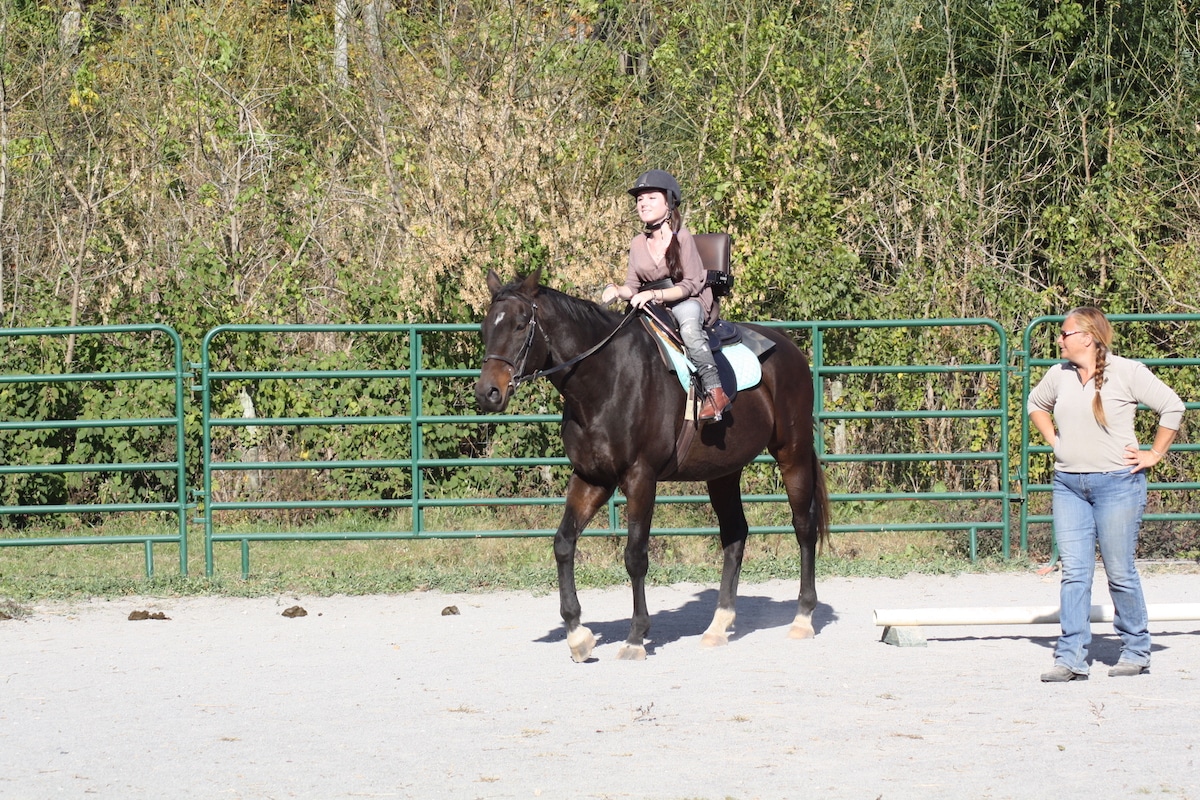
Anna Collette, pictured riding, shares her 23-year-old “soul horse” Dewey with Healing Strides. Courtesy Healing Strides
(Sovereign Dancer — Chieftan’s Command)
1994 gelding
Breeder: Dr. J. Fred Miller III, Kentucky
Race record: 5-0-2-1
Track earnings: $9,520
Healing Strides
Boones Mill, Virginia
Dewey’s owner, Anna Collette, says her 23-year-old gelding didn’t do so well on the track because, in her words, “he’s probably the slowest Thoroughbred in the world.” He’s so slow, in fact, it took what felt like 20 minutes for him to make a lap around the arena the first time Collette rode him.
Her trainer, Carol Young, who’s executive director of Healing Strides, a PATH premier-accredited therapeutic riding center in Southwest Virginia, describes his gait during that first ride as a “tiptoe,” something she’d never seen a horse do before with a rider.
“He kept looking back at me, checking to see if I was okay,” says Collette, who has muscular dystrophy, a degenerative condition marked by progressive muscle wasting.
It took saddlers 12 months to build a custom adaptive saddle for Collette. So for that year, she exercised Dewey from her wheelchair, building their relationship by free-longeing him, teaching him tricks and working through Clinton Anderson exercises. Now, with their specialty saddle, the pair competes in dressage musical freestyles.
Collette shares Dewey with Healing Strides, where she’s also a certified therapeutic riding instructor and first connected with the gelding. There, he participates in therapeutic riding classes and mental health programs.
Dewey, who previously evented and is trained through fourth level in dressage, came to Healing Strides after his previous owner died unexpectedly. The woman’s mother knew the beloved horse had much love to give and sought out the program as his forever home. The stars aligned, and Dewey ended up with Collette, who calls him her “soul horse.”
Jess Not Jesse, aka “Jay”
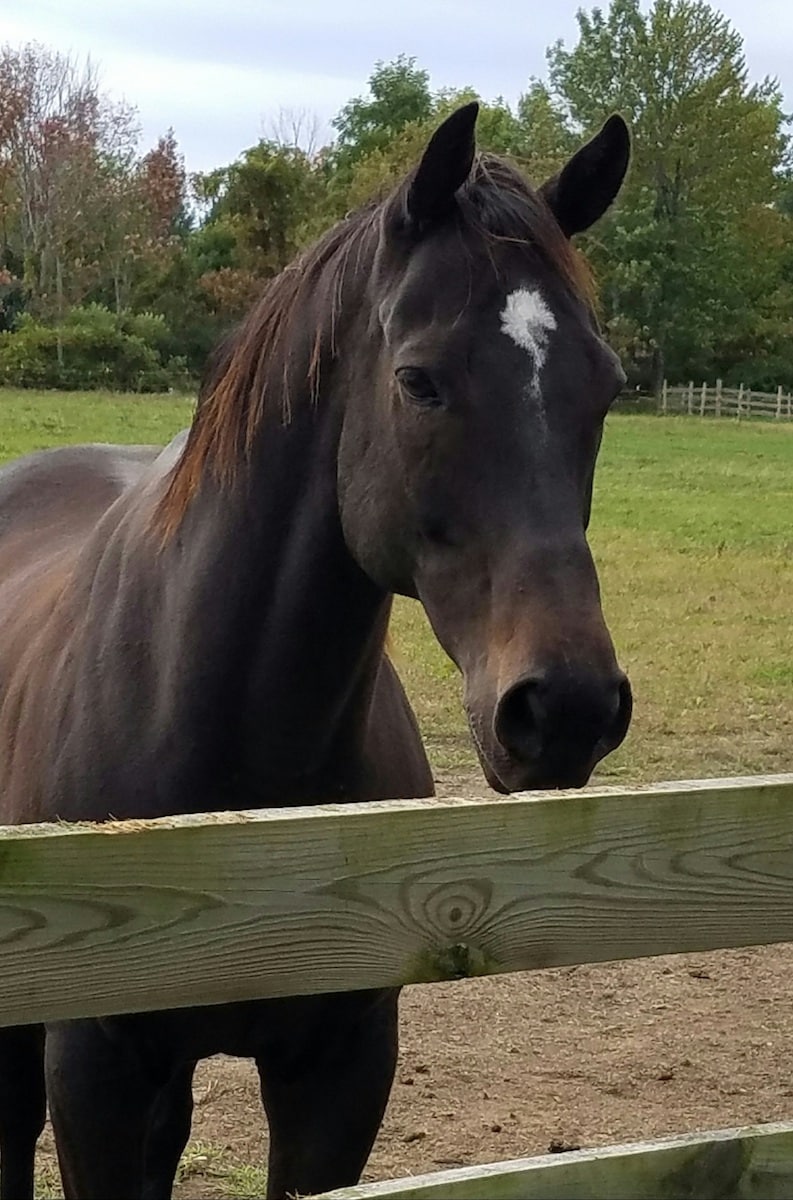
Jay is alert, responsive and loves being around humans — qualities that make him a perfect partner at Saratoga WarHorse. Courtesy Saratoga WarHorse
(Mirardi — Alex Hollywood)
2006 gelding
Breeder: Robert Koones, Kentucky
Race record: 22-8-3-5, stakes placed
Earnings: $261,862
Saratoga WarHorse
Saratoga Springs, New York
The first time Melody Squier saw “Jay” and moved him around the pen, she knew he needed to be a part of the Saratoga WarHorse program. The big bay gelding was alert, responsive and intent on the human sharing his space — exactly the qualities needed for the program, which pairs U.S. veterans with Thoroughbred ex-racehorses for a one-of-a-kind healing experience.
Squier is the lead instructor and equine development director for WarHorse, which she helped develop with founder and Vietnam veteran Bob Nevins, who manages the program’s veteran component. When she met Jay, Warhorse wasn’t ready to add to its herd. “But I couldn’t get the horse out of my mind,” she says. So, she adopted him personally and started his training for the program.
Jay participated in his first veterans’ intensive in February 2016. The experience introduces veterans, many of whom suffer from post-traumatic stress, to Thoroughbreds. The ex-racehorses and the vets share many parallels, Squier says: Both horses and humans started their careers young, going abruptly from youthful adolescence to “boot camp” and a regimented training program, usually for an intense three to four years.
While not therapy per se, the experience is healing for the veterans who go through the program. The participants, many of whom have never touched a horse, learn to work with the animals in a round pen. Working with horses requires handlers to stay in the moment, Squier says, and once their minds are quiet, most of the veterans experience a moment of “connection” with their partner horses.
WarHorse enlists Thoroughbreds like Jay partly because they’re located in Saratoga Springs, a hotbed of high-end horse racing. “We pair world-class horses with world-class veterans,” Squier says. But they also use OTTBs because the horses are sensitive and reactive — in a good way — she says. That sensitivity is just what the veterans need from the horses to make life-changing connections.


